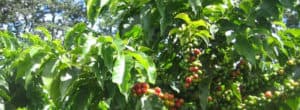
The Amazon is home to over 50,000 species of lush rainforest plants, spread across eight countries in South America. It is a complex ecosystem with endless opportunities to explore the natural world.
We’ve put together a list of 11 plants that stand out for their looks and special adaptations.

This unique plant is a carnivore, meaning it gets its nutrients by eating animals. They have “pitchers” filled with sweet, brightly colored nectar. That’s how they get insects to fly or crawl in to be eaten!
The “pitcher” liquid is full of bacteria and a special acid to digest the plant’s prey. It acts like the plant’s stomach by breaking food down to collect the nutrients.
Some pitcher plants get their nutrients by attracting small animals. The animals sit on the plant and leave behind nutrient-rich droppings.

The Monkey Brush Vine is a parasitic plant. That means it gets its nutrients by tangling itself with other plants.
When it blossoms, this vine’s flowers are bright yellow and red. It gets its name from the flower’s spiky appearance.

Passion flowers come in many different vibrant colors.
Indigenous groups around the Amazon Rainforest use the juice from passion fruit in their medicine. Also in their traditional medicine, the leaves of this plant are used to treat headaches and sleeping problems.
Some passion flowers only bloom at night. These flowers are pollinated by nocturnal bats.

The curare plant contains a dangerous chemical that can shut down a predator’s nervous system. That’s how this plant survives.
Historically, some indigenous tribes used a paste made from curare on the tips of their arrows. When the paste entered an enemy’s body, they would become paralyzed and then die soon after.
Surprisingly, this potentially dangerous plant has been used in medicine – in very small doses. In the 1900s, some doctors used it as a muscle relaxing anesthesia. Today, some South American tribes use small amounts of curare in natural remedies for fever and inflammation.
 Their huge platter-like leaves are easy to spot floating on top of the water. What you don’t see are their long stems that extend all the way down to the mud underwater.
Their huge platter-like leaves are easy to spot floating on top of the water. What you don’t see are their long stems that extend all the way down to the mud underwater.
Their leaves can grow up to almost 10 feet across. Each leaf is surrounded by a rim that’s a couple of inches tall. The bottoms of the leaves are covered in small protective spines.

This plant got its name because of the shape of its leaf structures called bracts.
Lobster claw flowers are small and hidden within the bracts. Very few birds can reach the nectar of the flowers. They are mostly pollinated by hummingbirds who can reach the nectar with their long, thin beaks.

There are thousands of orchid species in the rainforest, with a huge variety in their sizes and colors.
Many of them have unique appearances despite belonging to the same orchid family. For example, the bee orchid camouflages itself as a female bee. This attracts male bees, who pollinate the flower thinking they have found a mate.
Most orchids grow on existing trees, but some grow at ground level, on rocks, or even underground.
Each orchid species has only one animal species that pollinates it. If an animal species becomes endangered or goes extinct, so does the entire orchid species it was responsible for pollinating.

This tree is the source of acai, a popular superfood with loads of nutrients and antioxidants. It takes about 5 years for an acai palm to start producing berries. Then, each tree makes almost 15 pounds of berries every year.
Many animals in the rainforest eat acai berries. When they drop seeds throughout the rainforest, new palm trees grow.
 Ancient Mayans believed this tree marked the center of our world. Soaring above the dense rainforest canopy, the Kapok Tree grows about 10 feet a year until it’s up to 200 feet tall.
Ancient Mayans believed this tree marked the center of our world. Soaring above the dense rainforest canopy, the Kapok Tree grows about 10 feet a year until it’s up to 200 feet tall.
Many small animals live in the crevices of this tree giant. It is pollinated by bats, who are drawn to its flowers’ nasty smell.

The Rubber Tree got its name from its sap. This tree produces a latex sap that we use to make rubber. Once a Rubber Tree is six years old, we can harvest its latex using taps.
The ancient Maya and Aztec natives first used the rubber trees’ waxy leaves to waterproof their clothing and shoes.
This tree does not need the help of animals to reproduce. When its fruits are ripe, they burst open. The seeds from inside the fruit go flying in every direction up to 100 feet away.

Millions of adults around the world rely on the coffee plant as an essential part of their morning routine.
Coffee beans grow on bushes with little white flowers that attract pollinators. Flowers fall off and are replaced by berries, which contain only two coffee beans each. Coffee plants can produce coffee beans for up to 100 years in the right conditions.
According to Ethiopian legend, a shepherd in ancient times saw his goat eat a coffee berry and immediately become energized. After that, he made the first ever cup of coffee by brewing the berries into an energizing hot drink.
Today, coffee is a billion dollar global industry.